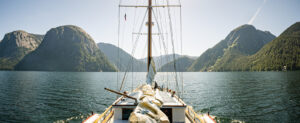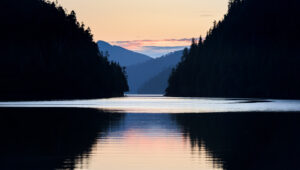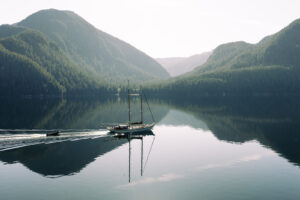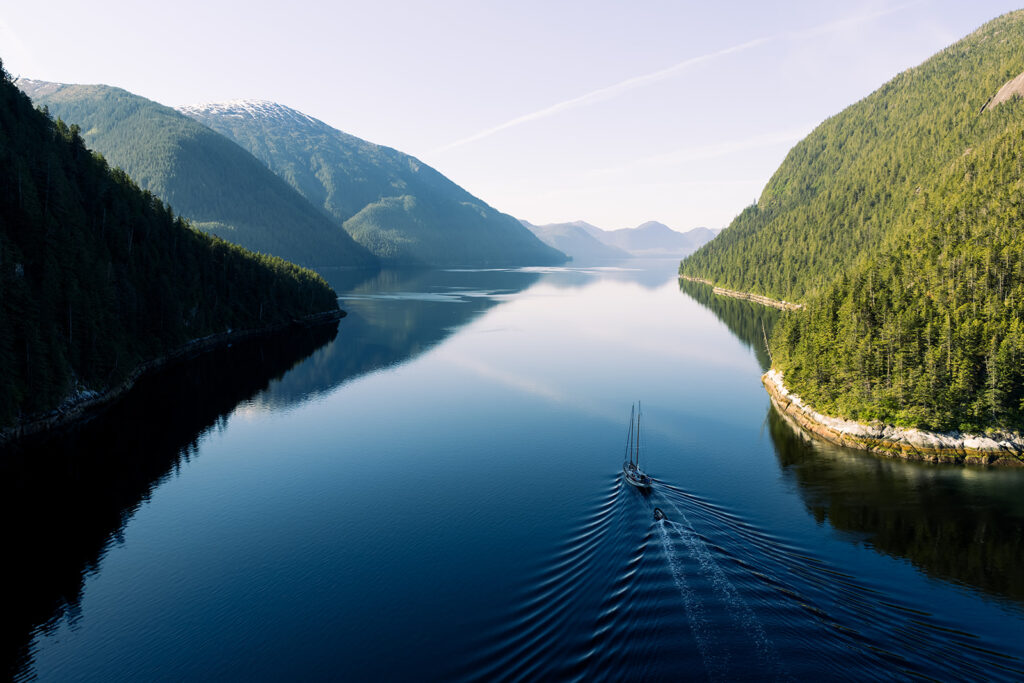
In the traditional territory of the Heiltsuk and Kitasoo-Xai’xais First Nations, the rhythms of tide, salmon, and season shape both land and life. This is the starting point for our Spirit Bear Explorer expedition; an eight-night voyage into one of the most wildlife-rich corners of the remarkable Great Bear Rainforest.
Our expedition begins on the remote North Coast of British Columbia, in the Heiltsuk First Nation community of Bella Bella, at the Shearwater Marina. The classic wooden schooner and expedition vessel, Passing Cloud, sits quietly alongside, with her crew busy with final preparations. Our small group of just six guests boards at about 10am, and after gathering for introductions and a short safety briefing, we cast off. The excitement of our impending adventure is palpable.
As we sit down to our first meal together, the shoreline begins to slip by, and the vastness of the pristine landscapes begins to sink in. Humpback whales, sea otters, and Steller sea lions may greet our expedition’s start. Sculpted by glaciers, overgrown by rainforests, shaped by salmon, and governed by the movement of tides and seasonal weather systems of the Pacific Ocean, this is the largest intact coastal temperate rainforest ecosystem in the world. This is Canada’s Great Bear Rainforest.
Unlike our other expeditions here, our Spirit Bear Explorer expeditions forgo the deep fiords and grizzly-dominated estuaries of the mainland. Instead, we venture west, to the surrounding archipelago of large islands, and sail deep into the vast network of inlets, waterways, valleys, and rainforests – the home of the Spirit bear.
Black Bear White Coat | a.k.a “Spirit” or “Kermode” Bear
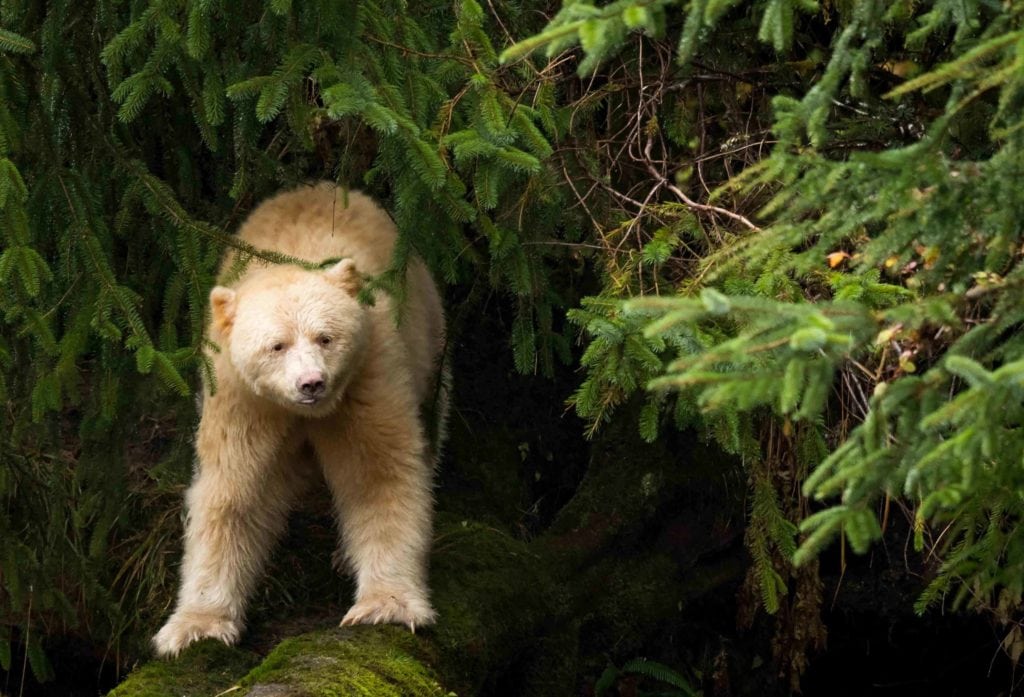
These white-coated black bears, known as Kermode or Spirit bears (Ursus americanus kermodei), are found nowhere else on Earth. Their distribution is incredibly limited, with estimates suggesting there may be as few as 100 individuals in existence. Indigenous oral histories have long spoken of a “1 in 10” frequency, a story now echoed by science. In the misty, moss-ladden, ancient forests here, black bears occasionally carry a rare double-recessive gene that produces white fur, an evolutionary expression unique to this corner of the world.
Central to this region is the Kitasoo-Spirit Bear Conservancy, co-managed by the Kitasoo-Xai’xais First Nation and the Province of British Columbia. Spanning roughly 1,000 square kilometres, this protected area was created, in part, to safeguard critical Spirit bear habitat. It’s here, and in the deep inlets and quiet valleys nearby, that we’ll spend much of our time visiting salmon-bearing streams, scanning shorelines, and moving slowly through landscapes that reward patience and presence.
Kitasoo-Spirit Bear Conservancy
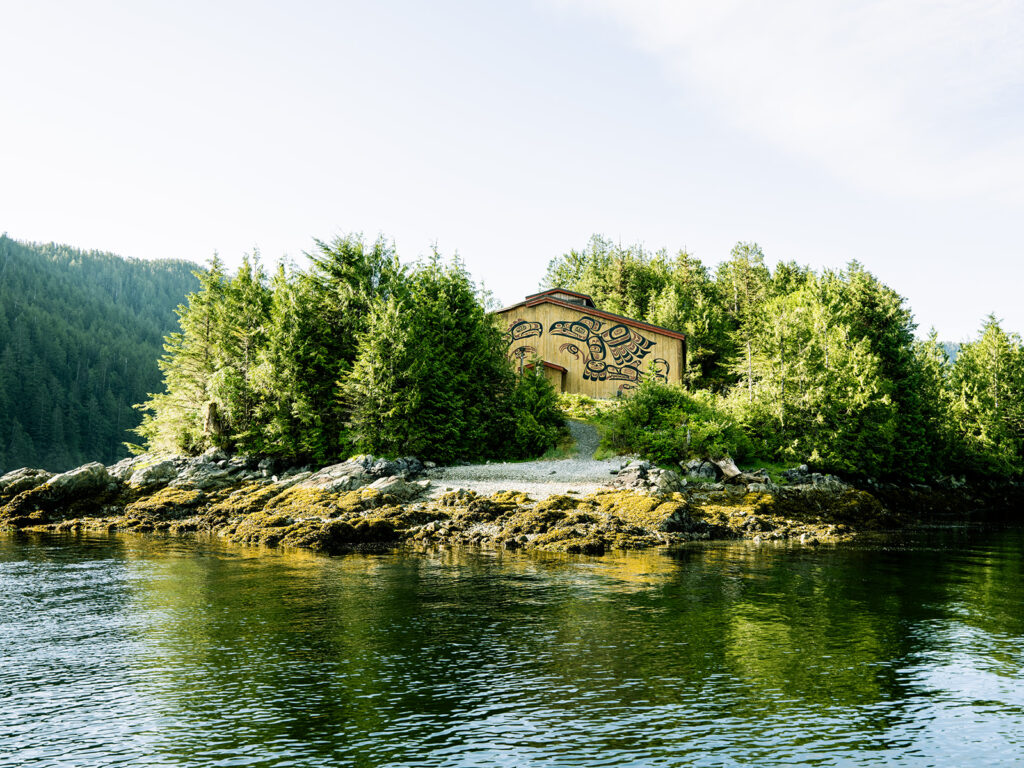
Throughout the week, our journey unfolds not as a race to a destination, but as a slow immersion into place. Each day, we’ll go ashore where conditions and wildlife activity invite us. Our inflatable skiff brings us up quiet channels where ravens call and kingfishers dart low across the water. As wildlife Pacific salmon return to spawn, the smell of the Great Bear Rainforest is thick in the air. The trails are wild and often uneven, and we ask that guests joining us for this expedition come prepared for longer, more physically active days ashore.
This increased time on foot is intentional. It reflects the nature of this expedition, and the reality that Spirit bear sightings are never guaranteed, but they are possible, and extraordinarily rewarding. We’ve designed this experience, in part, for those returning to the Great Bear with us, eager to explore a new corner of this immense protected region. It’s also ideal for guests drawn to the mystery and rarity of the Spirit bear itself, and those who understand that in a place like this, wonder is found not just in the sighting, but in the anticipation.
Orcas, Humpback Whales, Fin Whales, and Sea Wolves
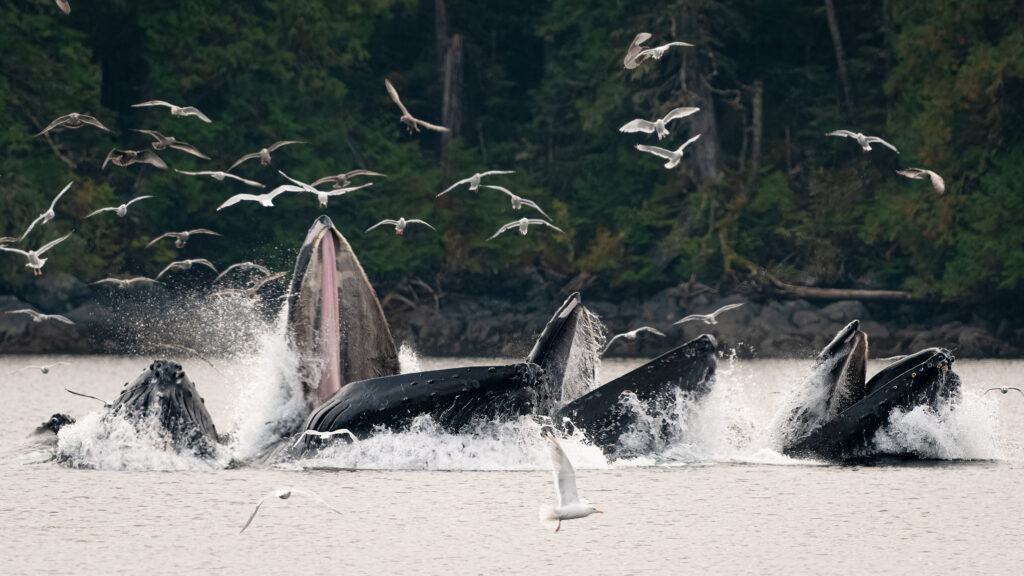
If weather and sea conditions allow, we’ll also visit a small nearby whale research station and connect with the scientists working in this region. The waters surrounding the Great Bear Rainforest, known as the Great Bear “Sea”, are alive with marine life. Humpback whales often gather here in large numbers, and this is one of the few places on Earth where they engage in the remarkable cooperative behaviour known as bubble-net feeding. Encounters with killer whales, fin whales, dolphins, and porpoises are also common, and always breathtaking. These remote islands are also home to the “sea” wolves that are uniquely adapted to these island ecosystems and the rich marine resources they provide.
By week’s end, we’ll have travelled deep into one of the planet’s largest tracts of intact coastal temperate rainforests. We’ll have walked salmon streams and ancient forests; listened for, and perhaps encountered, coastal wolves; scanned shorelines and streams for bears; and watched whales breaking the surface of the Pacific. And perhaps, just perhaps, we’ll have glimpsed a flash of white in the green rainforest: a reminder of all that remains rare, wild, resilient, but also fragile.
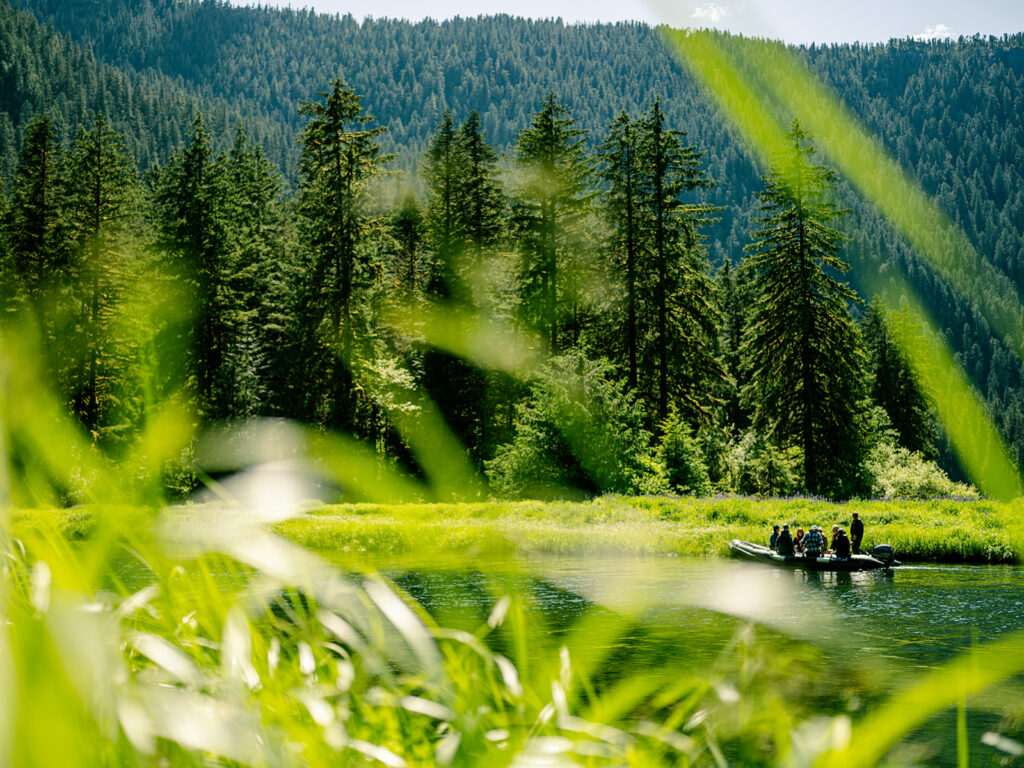
We hope you’ll join us! For more information please contact us!


